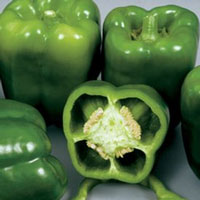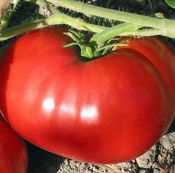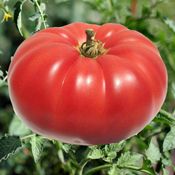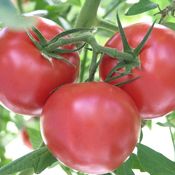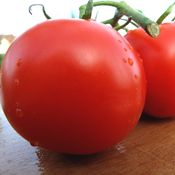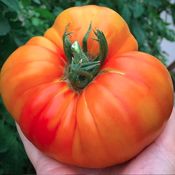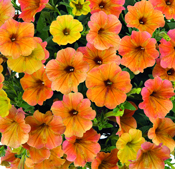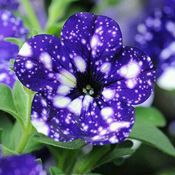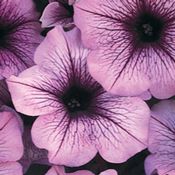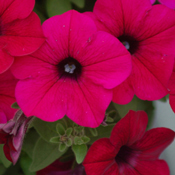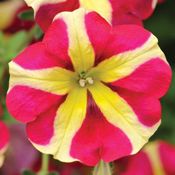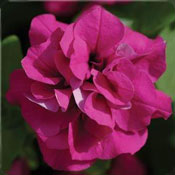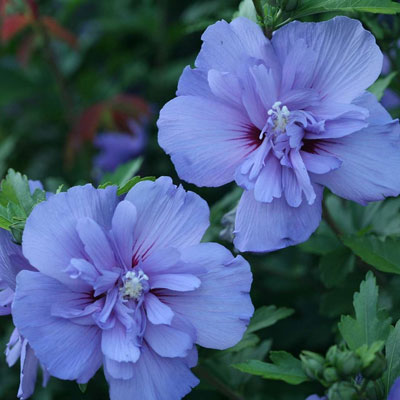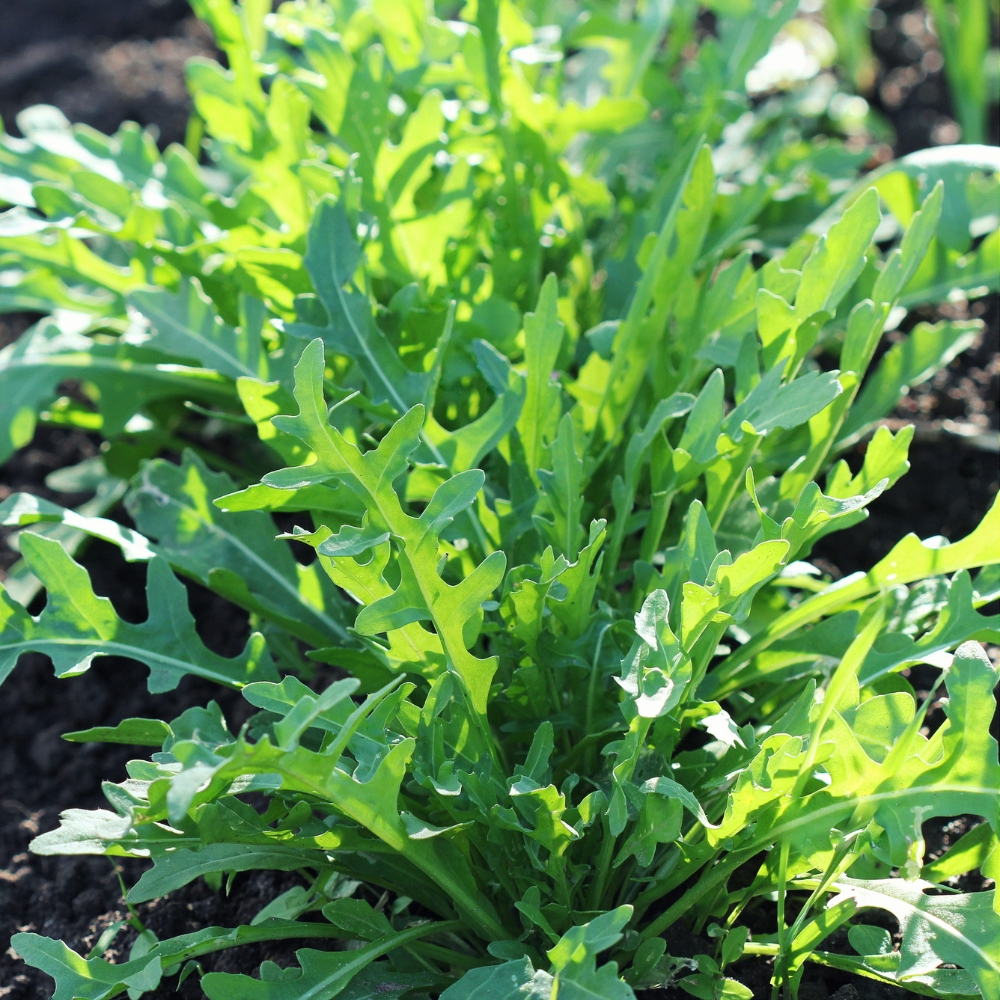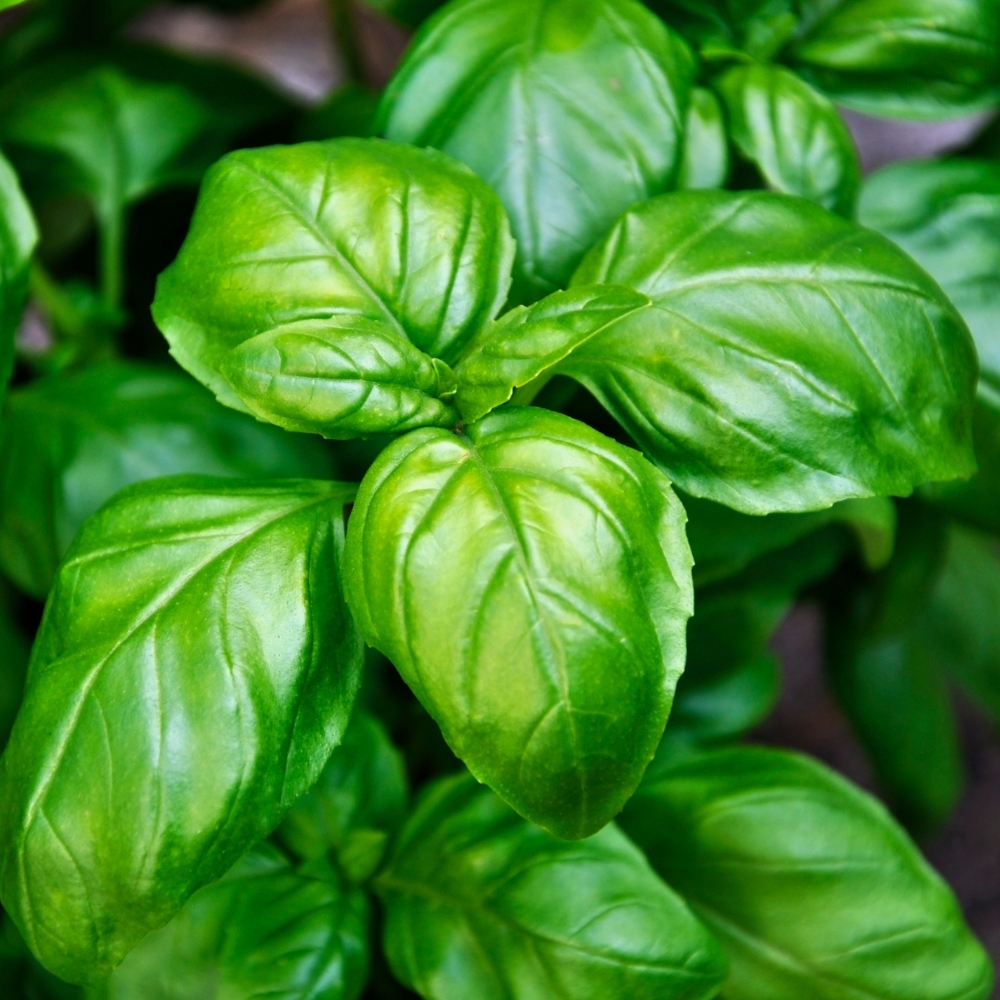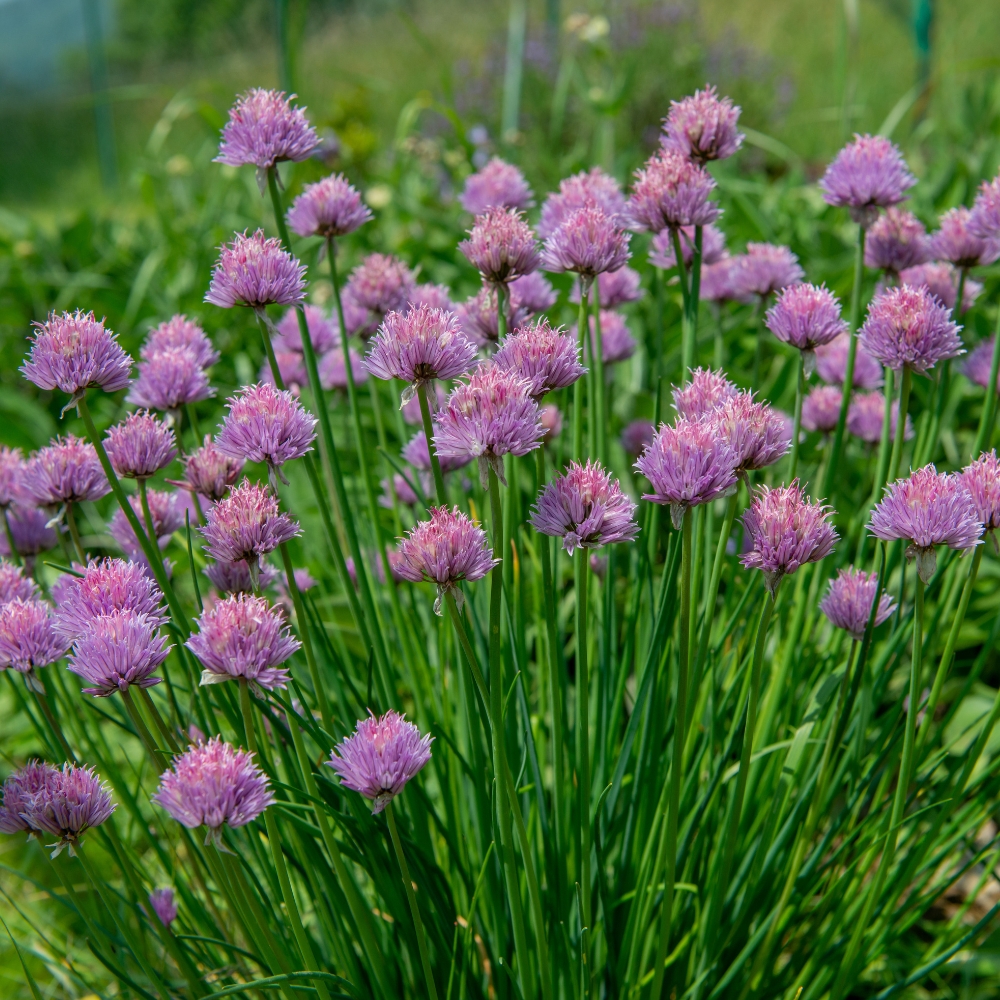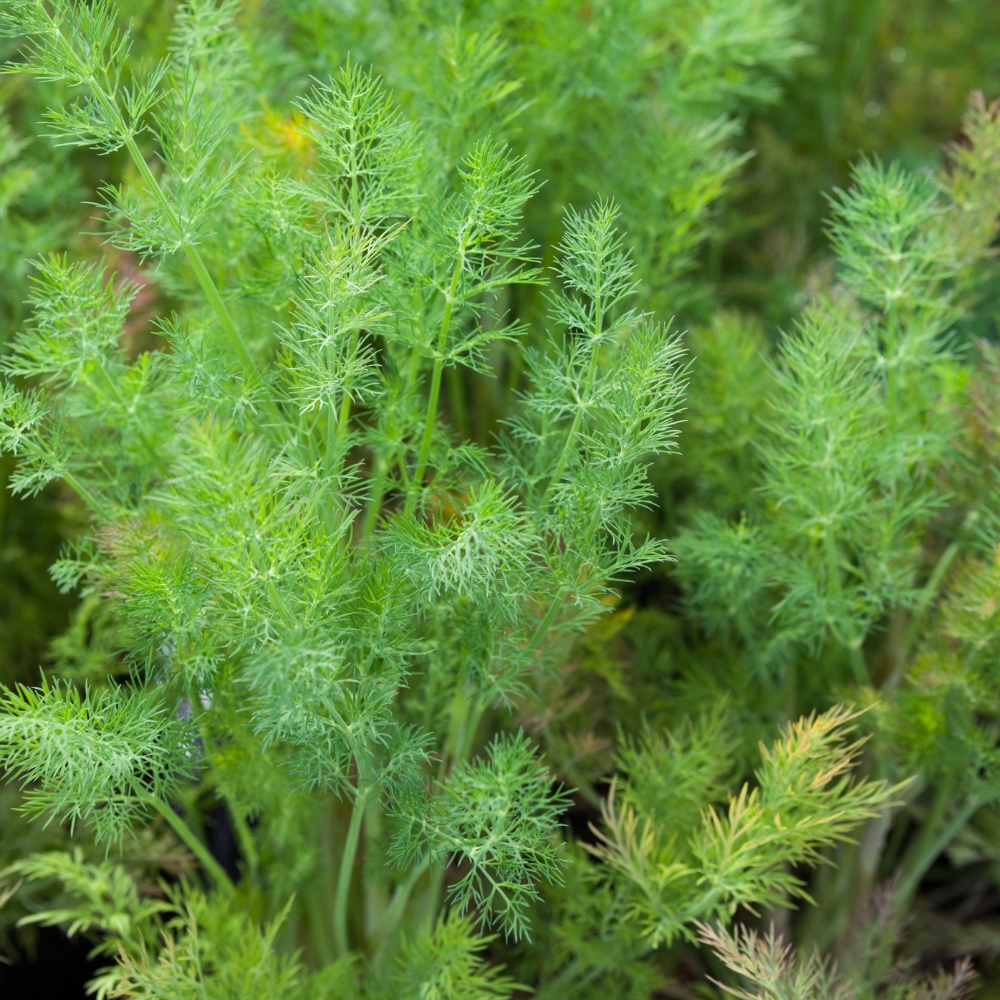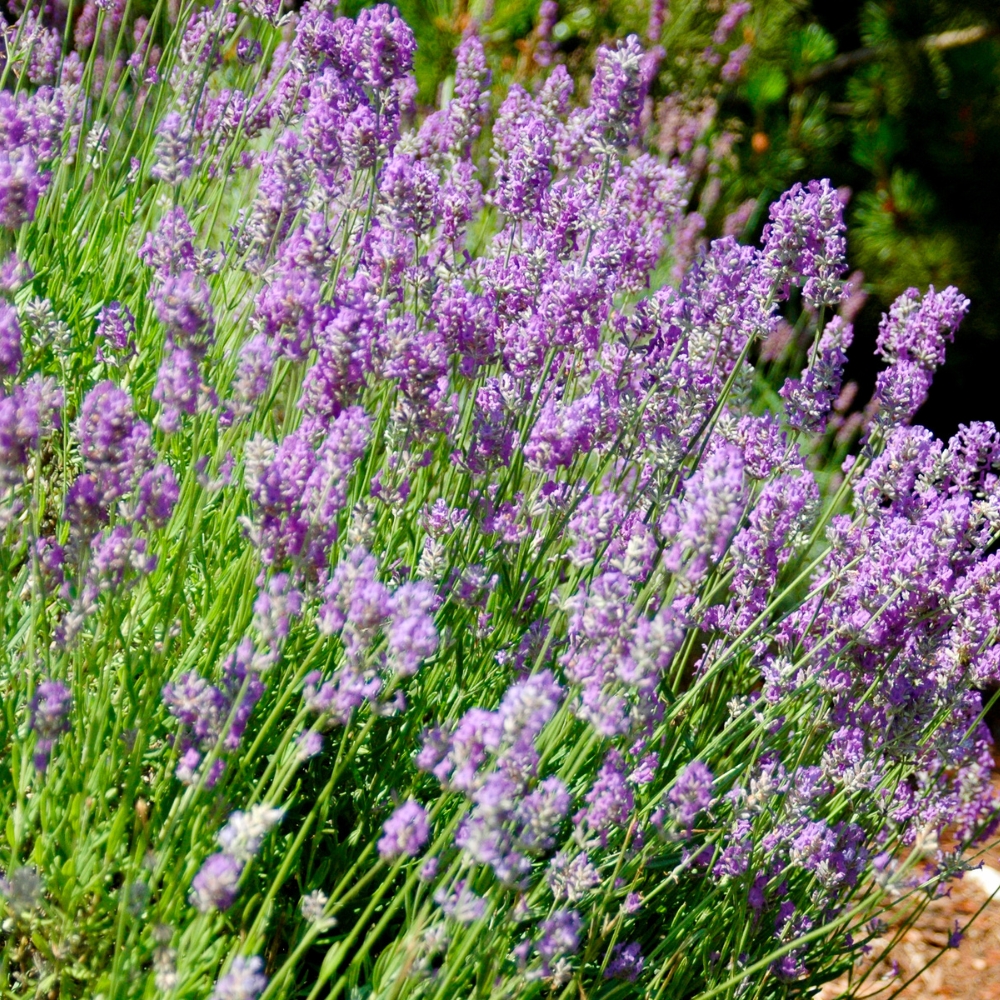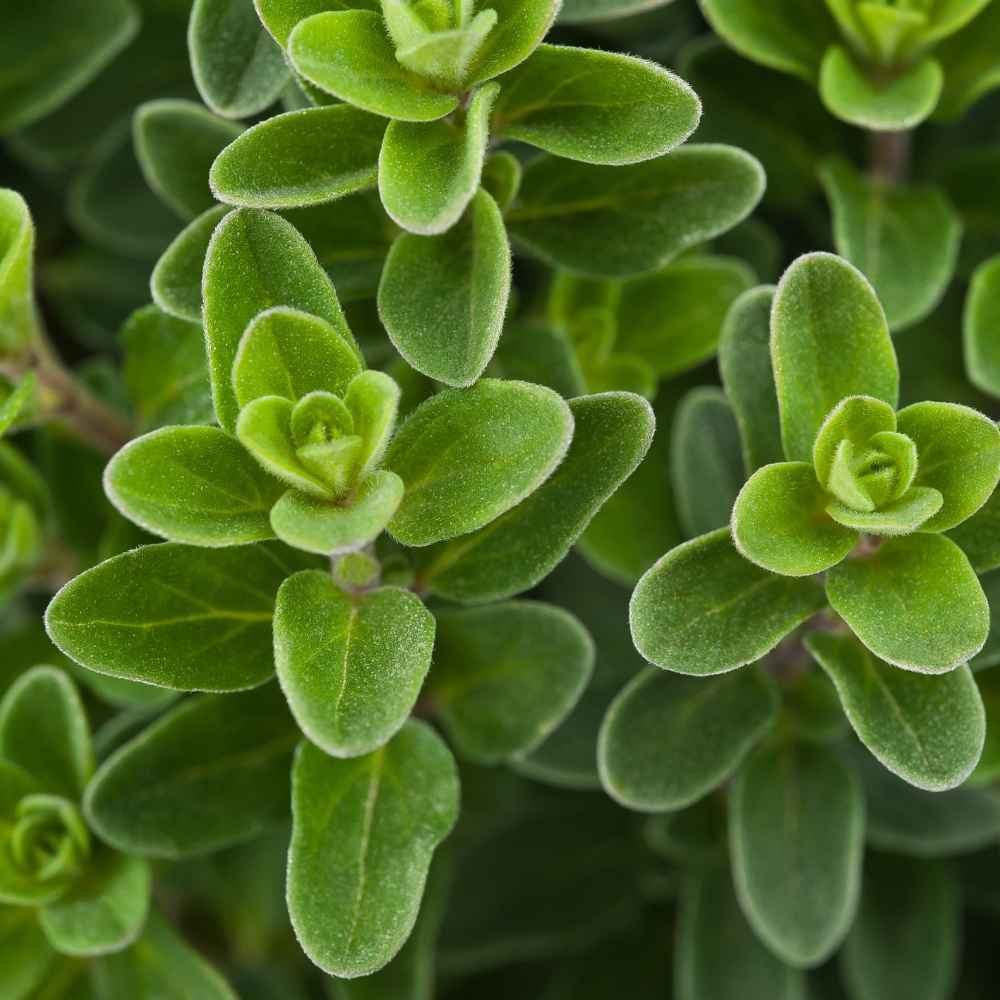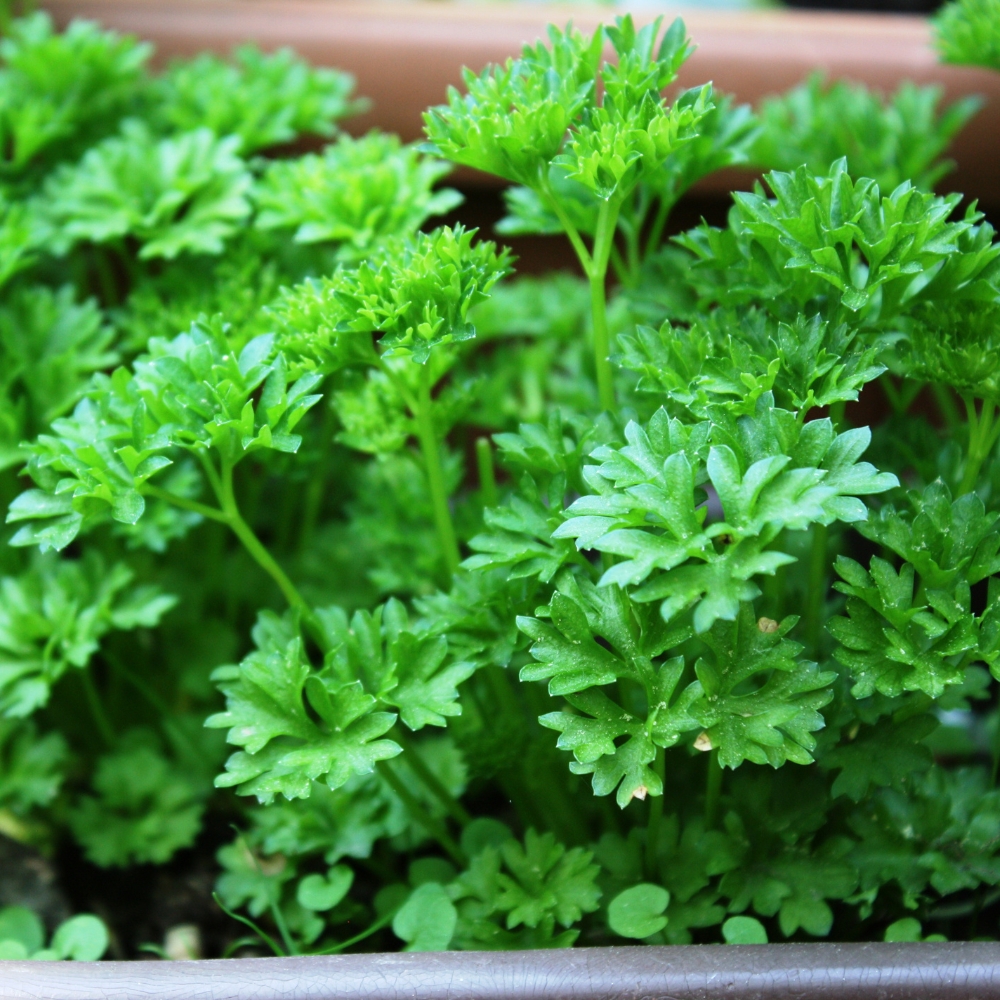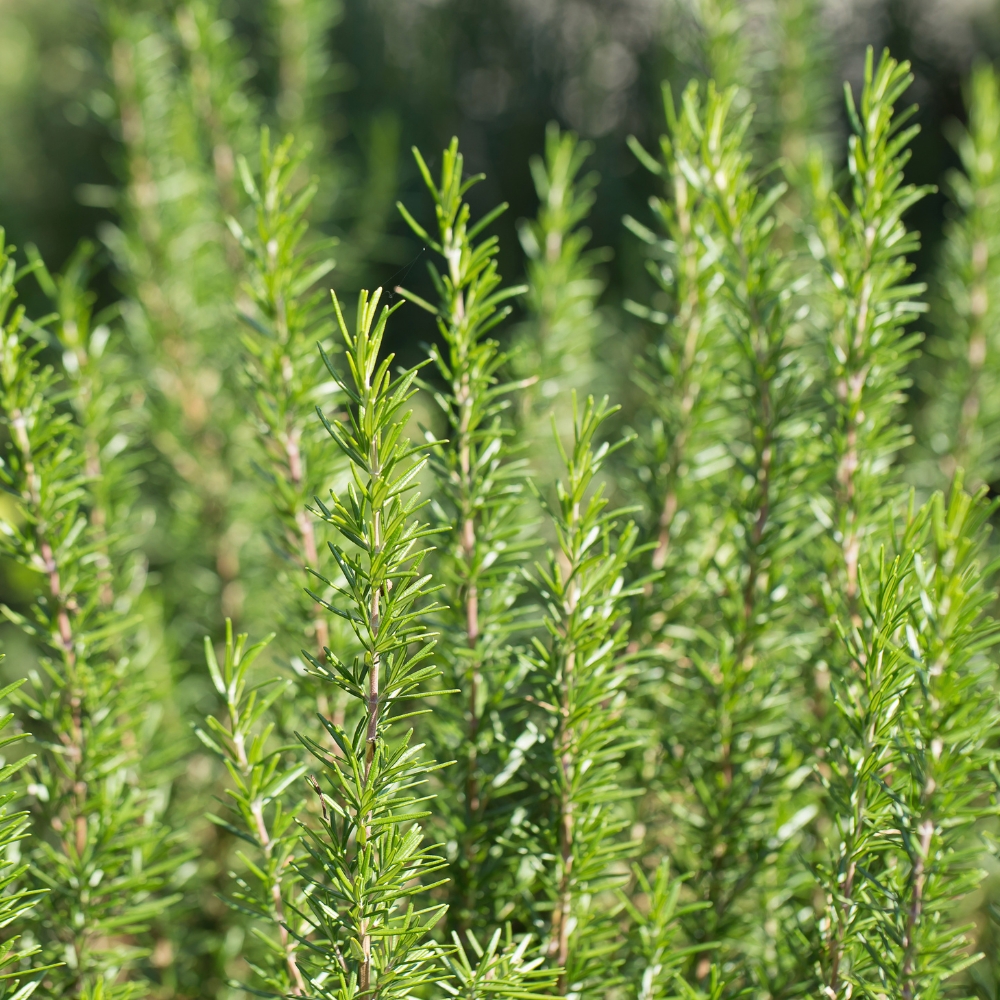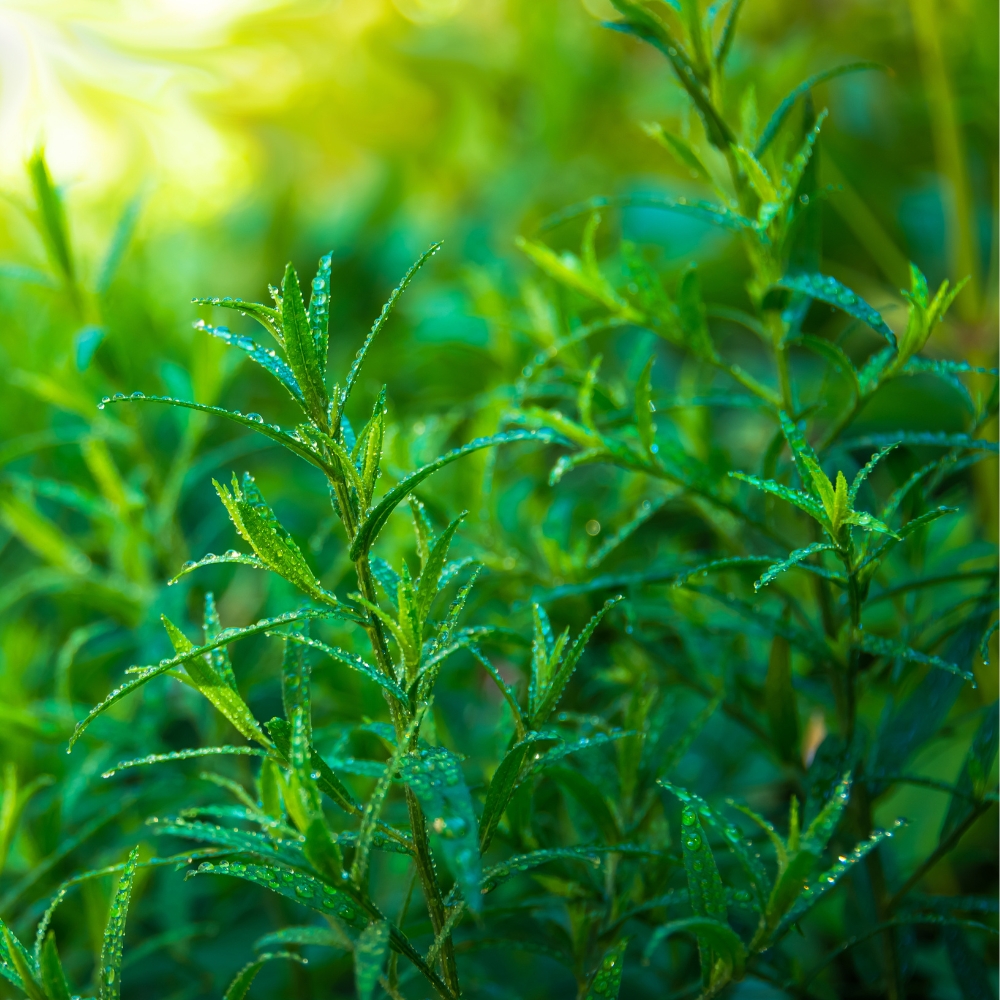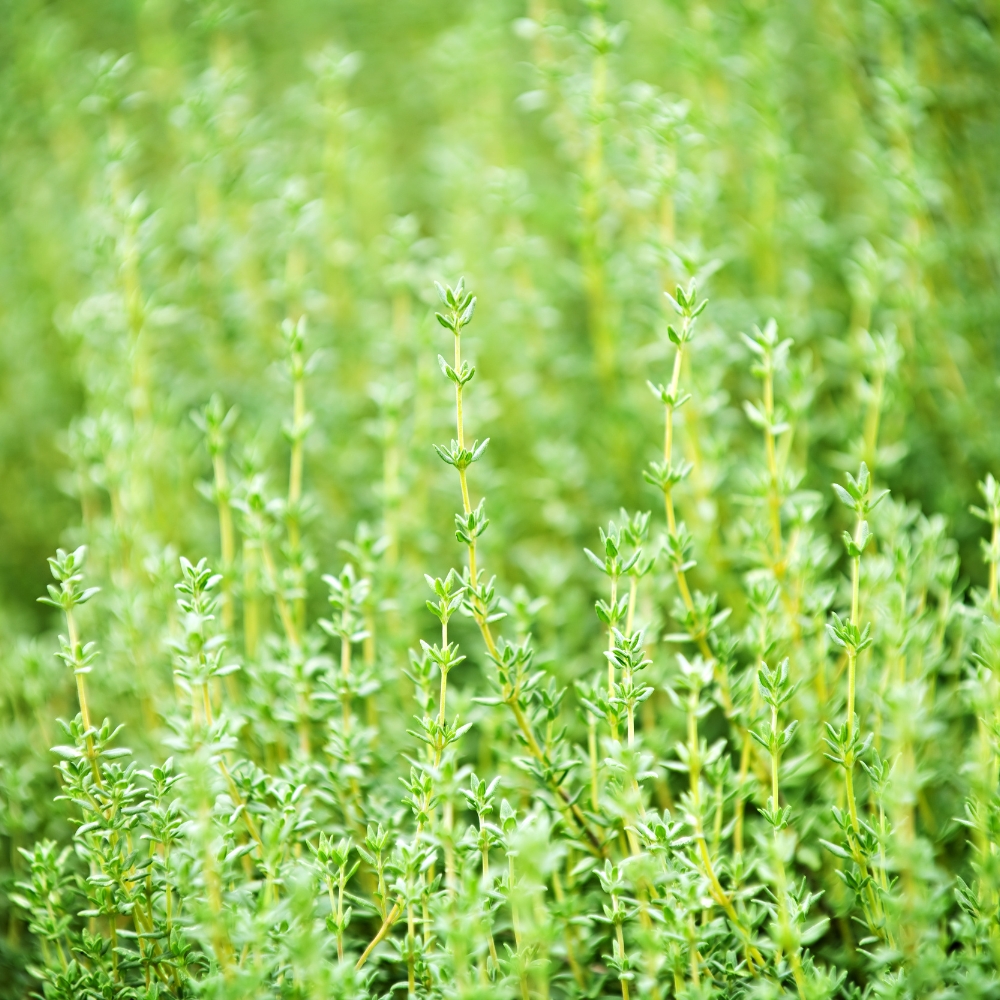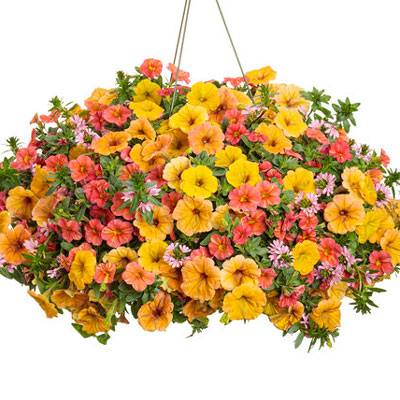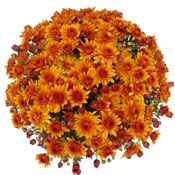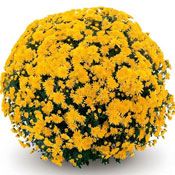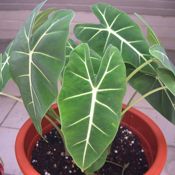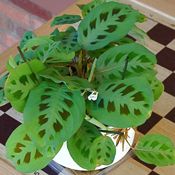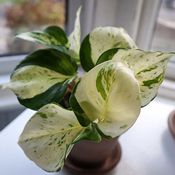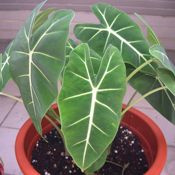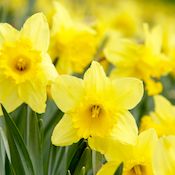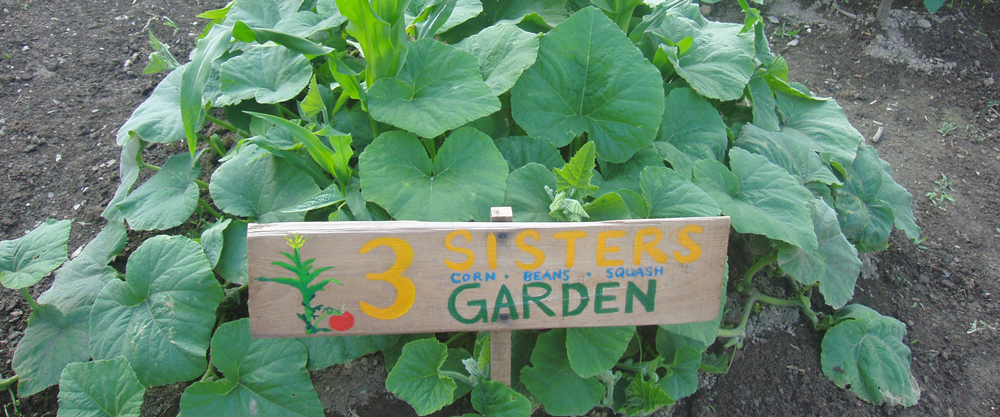
You have most likely heard the term Companion Planting. Many vegetable gardeners are embracing this practice, with the number of gardeners realizing the benefits and practicing companion planting is growing every season. Not only will companion planting help to attract beneficial insects, repel noxious pests, offer shade for your more tender vegetables, provide support for vertical gardening and fix nitrogen in your soil for healthier soil—it also enables you to take advantage of the benefits of different root systems throughout your vegetable garden. For example, vegetables such as radishes or carrots have deep tap roots, often alleviating soil compaction, allowing for better disbursement of nutrients and moisture to your other vegetable plants. Other deeply rooted crops, such as watermelon or asparagus can actually pull nutrients and moisture up through their roots, making them more available to your vegetable plants that have more shallow roots.
Companion Vegetable Planting & Pairings
Below is a detailed list of vegetable pairings with both benefits and cautions clearly indicated:
-
The Three Sisters (Corn, Beans, & Squash):
Indigenous peoples have used this method of growing for hundreds of years. Corn stalks are like a naturally-occurring trellis, ideal for beans to climb. Beans will fix nitrogen in your garden soil, as well as attracting beneficial insects. Squash plants will suppress weed growth, deter pests, and cool the soil. This combination is planted on hills within your garden and is a great way to more efficiently use the space in your garden. -
Onions & Beets:
Onions and beets have similar growing requirements, preferring loose soil at an adequate depth. Onions will also repel flea beetles and aphids that will feed on beets. Additionally, your beet greens will be protected from deer and rabbits, as these critters will avoid onions. Plant Beets with Brussels sprouts, bush beans, cauliflower, chard, broccoli, and kohlrabi. Companion vegetable plants for onions include tomatoes, lettuce, chard, cabbage, and carrots. Do not plant beets with pole beans or field mustard and do not plant onions near your beans or peas. -
Asparagus:
Asparagus grows relatively tall, with leaves that are fern-like, spreading to provide shade for lettuce and other more delicate, heat-sensitive vegetable plants. Plant Asparagus plants with basil, parsley, dill, tomatoes, and marigolds. Do not plant asparagus with garlic, potatoes, or onions. -
Corn:
Corn plants provide a natural trellis for climbing vegetables, such as beans and peas. Cucumber, squash, pumpkins, zucchini, and sunflowers are also ideal for pairing with corn. Do not plant corn and tomato plants in close proximity, as the tomato hornworm and corn earworms consider each of these vegetable plants interchangeable when it comes to being a food source. -
Squash & Pumpkins:
These two vegetable plants have similar soil, nutrient, and growth traits. Both Squash plants and Pumpkin plants will appreciate being planted near beans, corn, dill, peas, radishes, sunflowers, and strawberries. Do not plant either of these near potatoes. -
Tomatoes:
Tomato plants will grow well when planted with peppers, onions, carrots, asparagus, celery, and parsley. Basil and mint, as well as bee balm, will improve your tomato plants’ growth and flavor. Tomato plants do not like to be planted with kohlrabi, potatoes, dill, or corn. -
Basil:
Basil plants enjoy the companionship of potatoes, oregano, asparagus, beets, beans, eggplant, and chili and bell peppers. It has been proven that when basil is planted within about 1-foot of tomato plants, your yield will be increased. Basil will also improve the flavor of lettuce. The only basil enemy is rue, a small perennial shrub that is planted for culinary and medicinal uses. Rue is not widely grown in the U.S., though it is a traditional flavoring in some Mediterranean countries. -
Beans:
Bean plants despise garlic and onions, but will embrace being planted near carrots, cucumbers, corn, radishes, chard, cabbage, and radishes. Rosemary and Nasturtiums, when planted nearby, will deter bean beetles. -
Carrots:
Dill is the only plant that is considered an enemy of your Carrot plants. You can grow beans, onions, tomatoes, lettuce, peas, and peppers near your carrots. Growing Chives will enhance the flavor of your carrots, while growing Rosemary will deter carrot flies. -
Radishes:
Radish plants are often grown as a trap crop to protect the rest of your vegetable garden against various types of beetles by attracting them to your Radish plants. Beets, chives, carrots, kale, lettuce, spinach, squash, and cabbage are great companion plants for radishes. -
Strawberries:
Definitely do not plant anything in the cabbage family, peppers, tomatoes, potatoes, or eggplant in the vicinity of your Strawberry plants. Your strawberries will, however, enjoy the company of onions, sage, bush beans, chives, caraway, squash, and spinach.
Natural Pest Control
The following section provides an overview of natural pest control options using specific plants. These additions not only enhance your garden’s beauty but also support a healthier ecosystem.
-
Marigolds:
This low-growing flower blooms prolifically throughout the season, from spring through the fall. Though considered an annual, these pretty and beneficial flowers perform somewhat like a perennial, easily reseeding and germinating for the following season. The majority of Marigold varieties will grow 6 to 10-inches tall, though some may grow as tall as 14-inches. You will also have your choice of hues, from palest yellow to the deepest orange color you can imagine, and a selection of forms, such as pom-pom type blossoms, frilly and ruffled petals, and stunning bi-colored varieties. These are not your Grandmother’s marigolds! Plant marigolds as a border around both your vegetable and flower gardens.
• Repels: Damaging pests, such as cabbage worms, root-knot nematodes, whiteflies, and mosquitos.
• Attracts: Beneficial insects, such as ladybugs, hoverflies, parasitic wasps, as well as bees and butterflies necessary for pollination.
• Companion Plants: Tomatoes, peppers, and basil. -
Borage:
Sometimes known as the Starflower, the Borage plant produces whimsical sky-blue blossoms atop decorative leaves that are coarse and hairy. This plant grows 2 to 3-feet tall. Plant Borage away from your vegetable garden, though in fairly close proximity. This companion plant attracts aphids and Japanese beetles, so when planted separate from your gardens, will attract those nasty pests away from your vegetables and flowers. Borage flowers and leaves are edible, both having a mild, cucumber-like flavor. The leaves can be served fresh or cooked, while the flowers are ideal for decorating summer salads. The more flowers you pick the more flowers will bloom.
• Repels: Damaging pests, such as cabbage worms and tomato hornworms.
• Attracts: Beneficial insects, such as lacewings, parasitic wasps, and hoverflies.
• Companion Plants: Beans, cucumbers, peas, cabbage, squash, and peppers. -
Mint:
There are many varieties of mint: Spearmint, Peppermint, Mentha suaveolens (mildly flavored good for making jellies and jams), and Mentha longifolia, which has long leaves and plenty of blossoms to attract beneficial pollinators. Mint can be invasive, so we suggest you plant it in planters scattered throughout your flower or vegetable gardens, or within a border that will contain it. Sprigs of mint can even be laid amongst those plants you wish to protect, though you’ll need to replace them often. Use mint to garnish and flavor teas, make Mojitos, or to add to salads and other dishes that will benefit from a minty flavor.
• Repels: Nuisance pests, such as aphids, onion flies, ants, carrot root flies, mosquitoes, mice, and rats.
• Attracts: Beneficial pollinators and insects, such as bees, butterflies, hoverflies, parasitic wasps, and skipper butterflies.
• Companion Plants: Roses, marigolds, carrots, onions, radishes, tomatoes, peas, beans, and squash. -
Basil:
Many gardeners grow Basil plants in containers near the entryways to their home to repel flies. It’s robust, aromatic properties will repel pests, while its uses in the kitchen are endless. Combine plantings of marigolds and basil for the ultimate pest control.
• Repels: Damaging insects, such as whiteflies, tomato hornworms, asparagus beetles, aphids, spiders, carrot flies, cucumber beetles, thrips, armyworms, roaches, and houseflies.
• Attracts: Bees, butterflies, lacewings, and hoverflies.
• Companion Plants: Peppers, carrots, chives, and Cole crops, such as broccoli, cauliflower, cabbage, and kale. Flowers include Borage, which is said by some gardeners to enhance basil’s flavor, and chamomile, which will not compete with basil for nutrients and sunlight. Plant basil about a foot away from your tomato plants to increase your yield, and near lettuce to improve its flavor. -
Catnip:
This attractive, spreading perennial has grayish-green, toothed leaves that are highly aromatic. In late spring to early fall, catnip plants are graced with long, densely-flowered spikes of violet-spotted, petite white blossoms, usually flowering for about 2 months. Catnip plants can grow up to 3-feet tall and wide under perfect growing conditions and can spread to form colonies through its short rhizomes. Catnip is considered a wildflower in some areas of the country. If there are cats that frequent your yard, their enthusiastic response to its euphoric properties may result in cats inadvertently killing other plants around the catnip. We suggest you allow a cat-friendly, vegetable plant-free zone around catnip plants.
• Repels: Destructive pests, such as aphids, Colorado potato beetles, flea beetles, Japanese beetles, cabbage loopers, weevils, mosquitoes, cockroaches, and squash bugs.
• Attracts: Beneficial pollinators, such as bees and butterflies, as well as lacewings, solitary bees, and hawk moths.
• Companion Plants: Cabbages, eggplant, potatoes, cucumbers, and radishes. It is also a great companion plant for plums and roses. -
Garlic:
A perennial vegetable plant, garlic is a bulb vegetable closely related to onions, chives, and leeks, though it is not recommended that you plant garlic close to those vegetables and other alliums. Garlic should also not be planted near legumes, as their growth can be stunted. Garlic is known to boost immunity, support heart health, and is considered an anti-inflammatory.
• Repels: Nasty pests, such as flies, cutworms, aphids, armyworms, caterpillars, beetles, mites, snails, slugs, ants, cockroaches, cabbage loopers, and mosquitoes.
• Attracts: Beneficial pollinators, such as bees, and predatory wasps and bees, ladybugs, and lacewings. Garlic is also an excellent fish bait, especially for trout and catfish.
• Companion Plants: Tomatoes, potatoes, beets, cauliflower, broccoli, kale, spinach, carrots, cabbage, strawberries, and chamomile, which is said to enhance garlic’s flavor when planted in close proximity.
Final Thoughts
Companion planting can result in reducing your use of harmful pesticides and protecting our precious environment, as well as enhancing the health of your garden soil, increasing your harvest, and in some cases enhancing the flavor of some vegetables. In addition to companion planting, rotating your crops every year or two will ensure that specific nutrients are not being depleted in your garden. Depleted nutrients will lower vegetable yields and affect the quality of your vegetables, including size, available nutrients, and flavor.
Companion planting and all of the information we’ve provided may seem somewhat daunting. An easy way to incorporate companion planting and natural pest control is to diagram your vegetable garden with those vegetables you traditionally plant. Then, refer to the information above to plant beneficial companion plants near what you usually plant. A simple diagram can help you to visualize how your vegetable garden will look, provide a shopping list of which vegetable plants you’d like to grow, and serve as a guide for the following season to rotate your vegetables.
As inflation continues to affect what we can afford at the grocery store, vegetable gardening is becoming ever more popular. We urge you to connect with gardening enthusiasts in your area; there are always groups that will be happy to have you. These groups can answer questions you may have and provide exceptional advice for the best vegetable harvest by recommending specific varieties that grow particularly well in your area. They can be an incredible source for information.
If you don’t have space for gardening, consider going out to the community to find a place where everyone can contribute and benefit from having a community vegetable garden. Boys and Girls Clubs, nursing homes, churches, and schools are just a few examples of organizations or groups that would appreciate your suggestions and may have the space to accommodate a vegetable garden.
You can always reach out to us as well. You can visit our Facebook page or Contact Us to submit a ticket or give us a call. Our experts will respond promptly to answer your questions or to provide valuable information. We look forward to seeing your photos or reading about your experiences with companion planting, as will our entire gardening community.

















































































